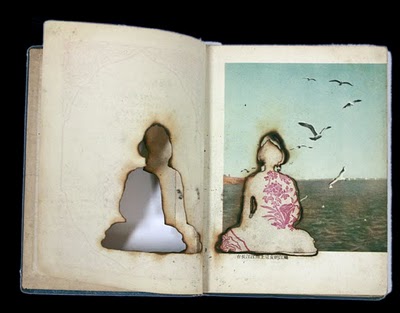The Wording of the Thing
Buddhism
is full of abstractions, terms that lend themselves to multiple translations,
conceptual reformulations and biases. Ridding ourselves of the temptation to
indulge in intangibles and absolutes is essential, in my view, to getting
anywhere in an honest revaluation of Buddhism and its content and this is
especially so as far as enlightenment is concerned. This is no small task as grasping
at spiritual claims can be very seductive. The way we talk about enlightenment
must be examined carefully if we are to make any sense of what it alludes to
and the first step involves examining the terminology that is commonly used to
define the thing. If the act of achieving some form of spiritual enlightenment
is a genuine and worthwhile human attainment that can exist as a tangible
possibility, then it must be able to be defined outside of a religious or
spiritual tradition’s idiom. The type of language that is so often used to
describe spiritual enlightenment is bombastic, supernatural, and usually out of
touch with the experience of the majority of the people within the traditions
themselves. What’s more, enlightenment is often described as ineffable, but that
leads to any manner of interpretation, and basically implies that such a
possibility is beyond examination, leading back to the dead end of trust in
wiser authorities and the indulgence in a division between those who know and
those that don’t. Perhaps what is needed is not more blind faith, but simply a
new way of talking about the thing. Rather than dismissive assertions that it
is something beyond words, we can look at the key terms within Buddhism and see
what they are actually pointing to and I shall attempt this in my own simple
way. Traditional followers of Buddhism will likely find fault with some of my
necessarily limited analysis, but I would hope that their critique is able to
avoid being overtly filtered through their own institutionalised Buddhist idiom,
and informed by thoughtful, independently minded critique.
Language
and experience are almost always inseparable. Language acts to give shape and
form to experience, as much as it shapes and forms experience itself. Even
moments of formlessness are followed by the form of conceptual formulations of reflection on what occurred. That is at
least if we wish to share that form with others and not isolate ourselves or
keep as private our experiences of extended phases of clarity, open awareness
and the diminishing of distances. The structure of the language and the
terminology we use daily, as well as in our attempts to explain uncommon
experience, are shaped by the linguistic habits we have digested and habituated
through the common discourse we have with others, with our descriptions and
ways of talking about the inanimate world, and ourselves through our inner-dialogue,
or as Mitchell Green, professor of philosophy at Virginia University, defines
it, ‘the chatter of consciousness’. The same is true of course at a collective
level. Groups however small or large develop their own internal dialects that
shape, open and limit the scope of discourse. As Edward Sapir the linguist
observed:
We see and hear and otherwise experience very
largely as we do because the language habits of our community predispose
certain choices of interpretation.
A
prime intellectual weakness amongst many Buddhists is that they become bound by
their own allegiance to codified norms of describing the phenomenon of
Buddhism, their tradition, their teacher, their role within that tradition and ways
of observing how relationships within their tradition unfold, evolve and are
managed. Buddhists follow a religion that holds out hope of freedom, yet they
do not seem to realise that when they sign up as Buddhists, they are actually
entering into a potential new form of entrapment: one of ideas and perspectives.
It might provide a more comfortable and more enriching reality than the one
they left behind, but the self-referential nature of most Buddhist groups does
not allow for such a conceptual possibility of confinement to exist and therefore
questioning Buddhism’s assumptions, norms and its ultimate aim often fails to
lead to discourse that might challenge the structures of their traditions and
give rise to creative and original engagement. There is such certainty within
Buddhist circles of their own truths and a sense of ownership of the answers to
life’s great questions and it is such that they rarely peek outside the door of
their tradition to check if this is actually the case and whether doubts, or
lack of conviction by non-members are not perhaps valid. Followers are unwittingly
duped and enlightenment remains as an ideological holy grail; a great promise
held out in perpetuity. It is solid enough to guarantee unending devotion,
ephemeral enough to never be fully grasped. Perhaps it is possible though to
ignore such games and institutionalised behaviour and to come at the notion of
enlightenment as a phenomenon of ongoing experience that can be examined, clarified,
defined and reasonably understood. Perhaps then its actual value to both
individuals and society may be examined, questioned and thought about more
soberly.

